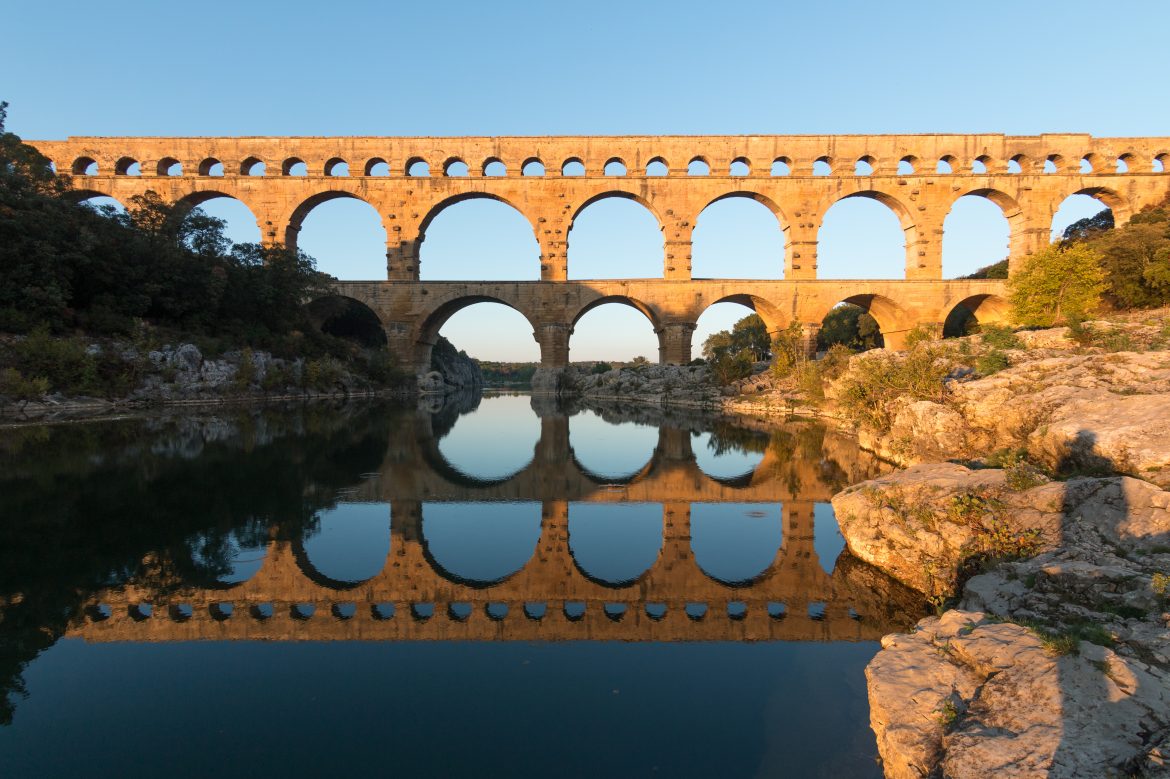
The Mystery of Roman Concrete
Although concrete may, unfortunately, remind of ugly constructions, it can be considered a building material with a very long history that provides good aesthetics and quite durable results when used correctly. Some of the structures built by the Romans, who were master engineers, still stand intact almost two thousand years later. Perhaps one of the best examples is the famous Pantheon in Rome, estimated to have been erected in the second century AD. This special structure hosts the largest dome (43 meters in diameter and 22 meters in height) built before modern construction techniques were adapted. And it still stands strong.
The durable building material discovered by the Romans stayed a mystery until a short while ago. In fact, several scientists and archaeologists made a number of trials to achieve the same results. None succeeded. Scientists were baffled by the structures that managed to remain intact for such a long time under harsh conditions, docks and sewers in particular. Studies conducted by laboratories in Switzerland and Italy, in collaboration with MIT and the Harvard University of the USA, seem to have yielded some results.
For many years, researchers thought that Roman concrete owed its reinforcing property to pozzolanic materials (named after the Pozzuoli Region in the Bay of Naples). These are fine-grained volcanic materials that lack a proper binding capability on their own but obtain hydraulic binding when combined with calcium hydroxide upon contact with water. This special volcanic-ash-like material was imported by the entire Roman Empire and was used in construction. Experts examining Roman structures knew that the mixture keeping the stones together contained lime residues as well as the pozzolanic materials. However, analyzed samples also contained small lumps of lime that were not entirely crushed. These were assumed “residues” possibly due to insufficient care while mixing the material.
“Ever since I first began working with ancient Roman concrete, I’ve always been fascinated by these features,” said Admir Masic, MIT professor of civil and environmental engineering. “These are not found in modern concrete formulations, so why are they present in these ancient materials?” He seems to have a point.
Researchers also assumed that the lime used in Roman concrete was first combined with water to obtain a very sticky, paste-like mixture. But this process did not explain the small lumps. Thus, Masic and his team began to wonder if a different method was used, and conducted experiments in the laboratory. When quicklime was added to the mix, it would cause a chemical reaction that produces a significant amount of heat, thus preventing the lime from completely dissolving and resulting in the formation of lumps seen in the ancient concrete samples.
These lumps are what make Roman concrete extremely durable. The fine cracks appear as the concrete ages, and when soaked with rain, these lumps dissolve and crystallize to close the crack. In modern concrete structures, cracks with a maximum thickness of 0.2-0.3 mm can heal themselves, while the material inspired by Roman concrete can heal cracks of 0.6 mm on its own.
The discovery will possibly benefit the modern construction world. The life of structures may be extended by using concrete that has self-healing properties, and formulas for 3D printers may be developed. At the same time, the negative environmental impacts of cement production, which accounts for eight percent of global carbon emissions, can be reduced. Masic and his team are also working on formulas for concrete that can absorb carbon dioxide from the air.
So, we can say that we still have a lot to learn from the ancient people.
REFERENCES
- 1. https://news.mit.edu/2023/roman-concrete-durability-lime-casts-0106
- 2. https://www.science.org/content/article/scientists-may-have-found-magic-ingredient-behind-ancient-romes-self-healing-concrete
- 3. https://www.britannica.com/topic/Pantheon-building-Rome-Italy
